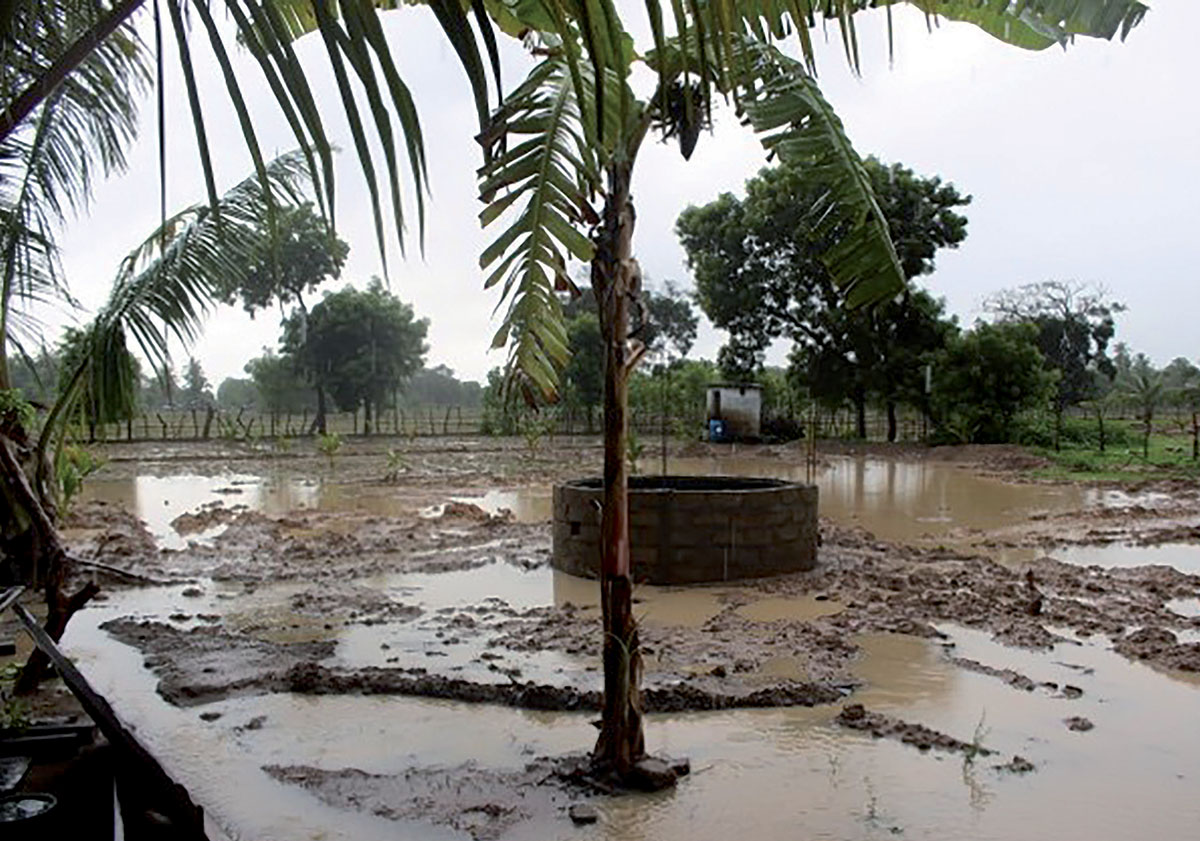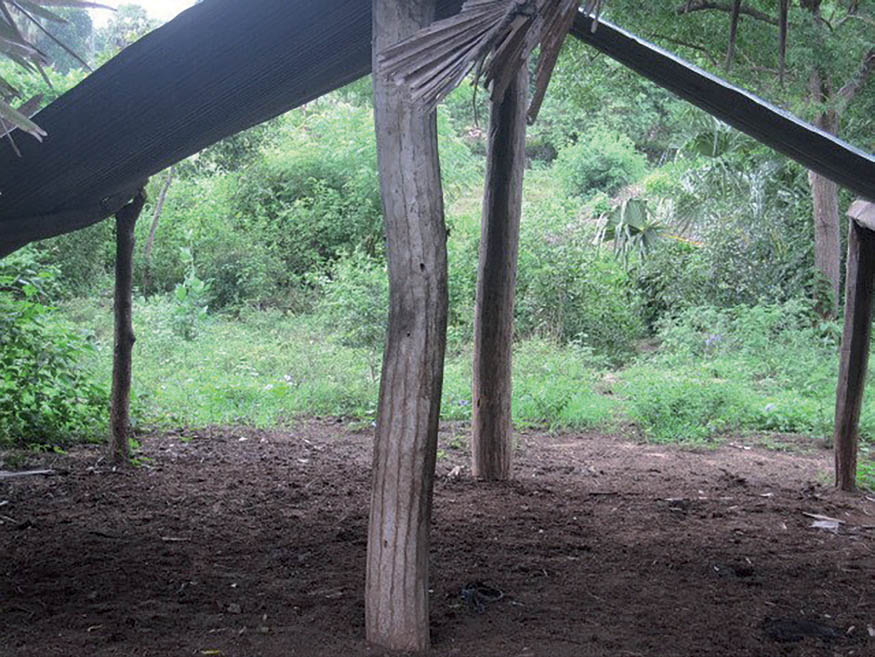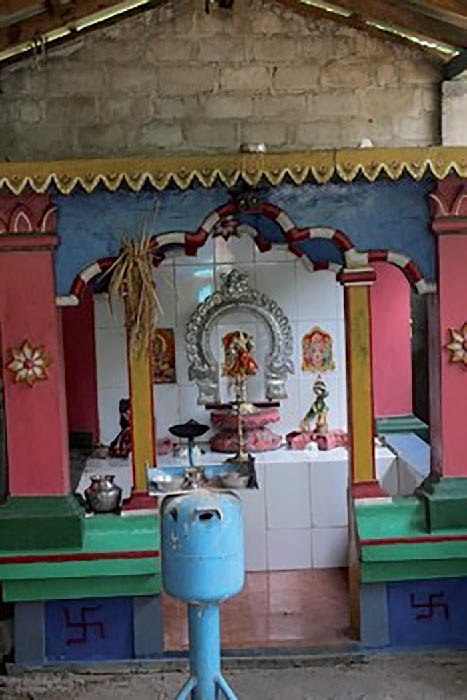New Zealand aid and dairy development in Sri Lanka
New Zealand aid funds dairy development projects in Sri Lanka to rebuild people’s livelihoods and support New Zealand’s trade interests. In October and November 2018, I conducted field research in the rural north of Sri Lanka, hearing from local female dairy farmers about how the project has impacted their livelihoods. While the economic impacts are clear, this micro-level research also captures an insight into the perceived environmental and social impacts of dairy development on female farmers in Sri Lanka.
Army checkpoints intercede long, quiet stretches of road in Northern Sri Lanka. The lush jungle gradually encroaches upon the weathered shells of abandoned homes. Their departed occupants fled or were killed in the brutal civil war that gripped the country for nearly three decades between 1983-2009. As one participant said, “There is not anyone here who has not experienced trauma”. Persecuted Tamil and Muslim communities in the North – who were also worst hit by the 2004 tsunami – have suffered intense violence and loss, and efforts to address the war’s legacy are needed to ensure livelihoods, wellbeing and continued peace.
My friend, a former refugee who has resettled in New Zealand, asked me to visit his family in Sri Lanka. His mother showed me her cows, dog-eared photos of her adult children, and her shrine, where she performed a puja (Hindu prayer ritual); his sister cooked Jaffna-crab curry – the local specialty – over red-hot embers; his nieces told me about their dreams to travel; his father asked me simply if his son was okay. My friend and his family, like countless others, have endured unimaginable losses and are attempting, with admirable resilience, to rebuild their lives and livelihoods.

Lost crop preparation due to the rains - dairy farming helps increase farmers’ resilience.
Any attempt to research and understand the experiences of Sri Lankan people, particularly relating to a development intervention, such as a New Zealand aid-funded dairy development project, is inextricably situated within the specific post-conflict context. Despite economic growth and social development in Sri Lanka since the end of conflict, a large portion of the population lives only slightly above the extreme poverty line and there is significant regional disparity with the poor being disproportionately rural. The dairy development project selected as a case study for this research originated in the intensely affected post-conflict zone, the Mullaitivu District, to address the needs of the community in rebuilding their livelihoods. Dairy development is recognised for its potential to improve economic, health and food security issues, as farmers can increase dairy production and sell milk to increase their incomes. My research focuses on understanding Tamil female farmers’ perspectives of livelihood impacts of dairy development.
Understandings of the issues (and potential issues) of dairy development are predominantly represented by agricultural actors, governments, scientists and academics; are typically focused at the macro- and meso-level; and are reliant on quantitative data. This research, therefore, employs a qualitative methodology using interviews, observation and photovoice methods, which addresses a gap in the literature on subjective, lived experiences of participants in dairy development projects.
I carried out field research over a five-week period in October and November 2018. I used purposive sampling to identify the primary participants for this research. The primary participants – five female dairy farmers – provided in-depth data for this research and other participants – development partner organisation (NGO) staff, Ministry of Foreign Affairs and Trade, academics and local dairy farmers – were interviewed to provide additional information on the project and to add depth and context to the understandings derived from this research. I wanted to find out how their lives have changed since they dairy project began. In addition to the positive economic impact of the project, which is well understood, I wanted to hear the women’s stories, to build a whole picture that included social and environmental impacts.
First, I asked the women if they wanted to take photos of what is important to them. Photovoice is a qualitative method that asks participants to take photos that highlight their experiences to reflect research themes. They all participated, despite never having used a camera. These photos began our conversations about the ways that their lives have changed since they began the dairy project. In interviews later the women relayed with pride the significance of the images they had captured: a calf that will produce more milk than all the other cows, a partially finished cattle shelter, a beautifully kept home built without help from anyone, a homemade shrine.
I held seventeen semi-structured interviews, five of which involved in-depth interviews, photovoice and observation with the primary participants, and the rest of which involved interviews and observation with various project stakeholders and local dairy farmers. The women described their triumphs since being involved in the project – money earned to buy school supplies, a reliable income to help when their husbands were without work, being able to sell milk when their crops fail due to extreme weather, and feeling that they are independent women who do not need to beg from others to survive.
As a result of this success, the women all wanted to expand their dairy production. Private sector partners and the New Zealand and Sri Lankan governments also have plans for dairying expansion. On the one hand, dairy development is seen as positive for communities, companies and governments in this context and, on the other hand, this research explores the nuances of dairy development that include the potential long-term implications for farmers’ environmental and social wellbeing.

A partially constructed cattle shelter.
The environmental implications of increased and intensified dairy farming, for instance, (such as livestock’s impact on climate change, declining soil, air and water quality) are little considered in the dairy project or understood by farmers beyond small-scale production. The integrated nature of farmers’ livelihood strategies is central to maintaining an environment in which resources are in balance as production increases – as has been the case for over a thousand years of dairying in Sri Lanka – but this appears to be in potential conflict with farmers’ priority to intensify livestock farming. However, farmers expressed concern for protecting and enhancing the natural environment, upon which their livelihoods depend.
I argue that it is critical that the impact of dairy development projects in developing countries on environmental factors – both local and global – receives adequate attention to ensure that short- to medium-term development outcomes are not at the expense of the environment and long-term livelihoods. Consideration of the full environmental impacts of dairy development initiatives is a fundamental responsibility of macro-level development actors who are supporting livelihood changes.

A Hindu shrine – religion is an important factor in farmer’s worldviews and farming practice.
This field research in Sri Lanka provided rich, contextual data on female farmers’ experiences and New Zealand aid. Reports provided to the New Zealand Ministry of Foreign Affairs and Trade and their partner NGOs in this project communicated the findings of this research, sharing knowledge across local and donor partners in development, and resulting in greater consideration of local, holistic impacts of dairy development.
Jasmine Edwards completed a Master of Development Studies at Victoria University of Wellington in 2019. Her field research was supported by the Asia New Zealand Foundation and the Ministry of Foreign Affairs and Trade. Jasmine currently works at New Zealand Red Cross.